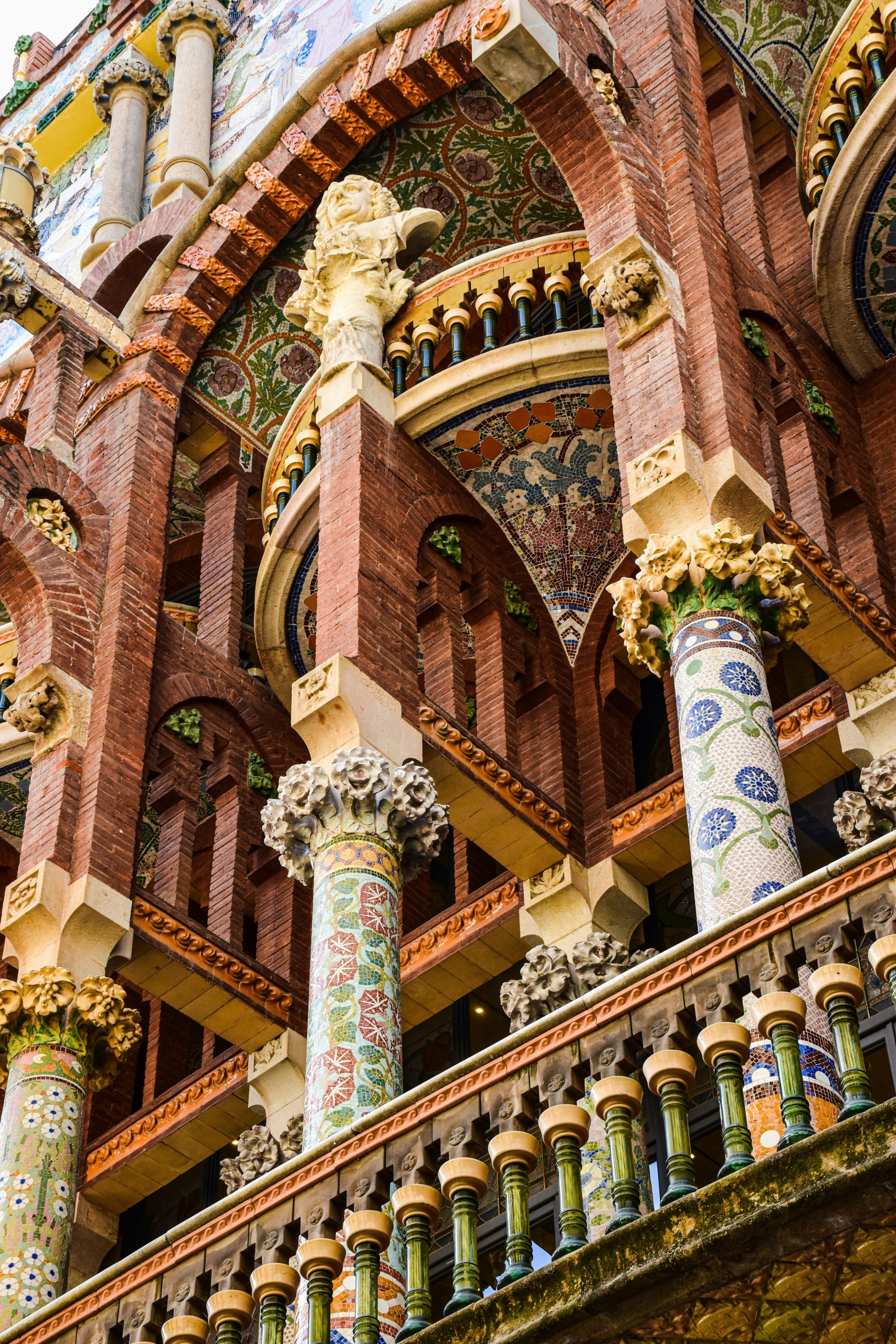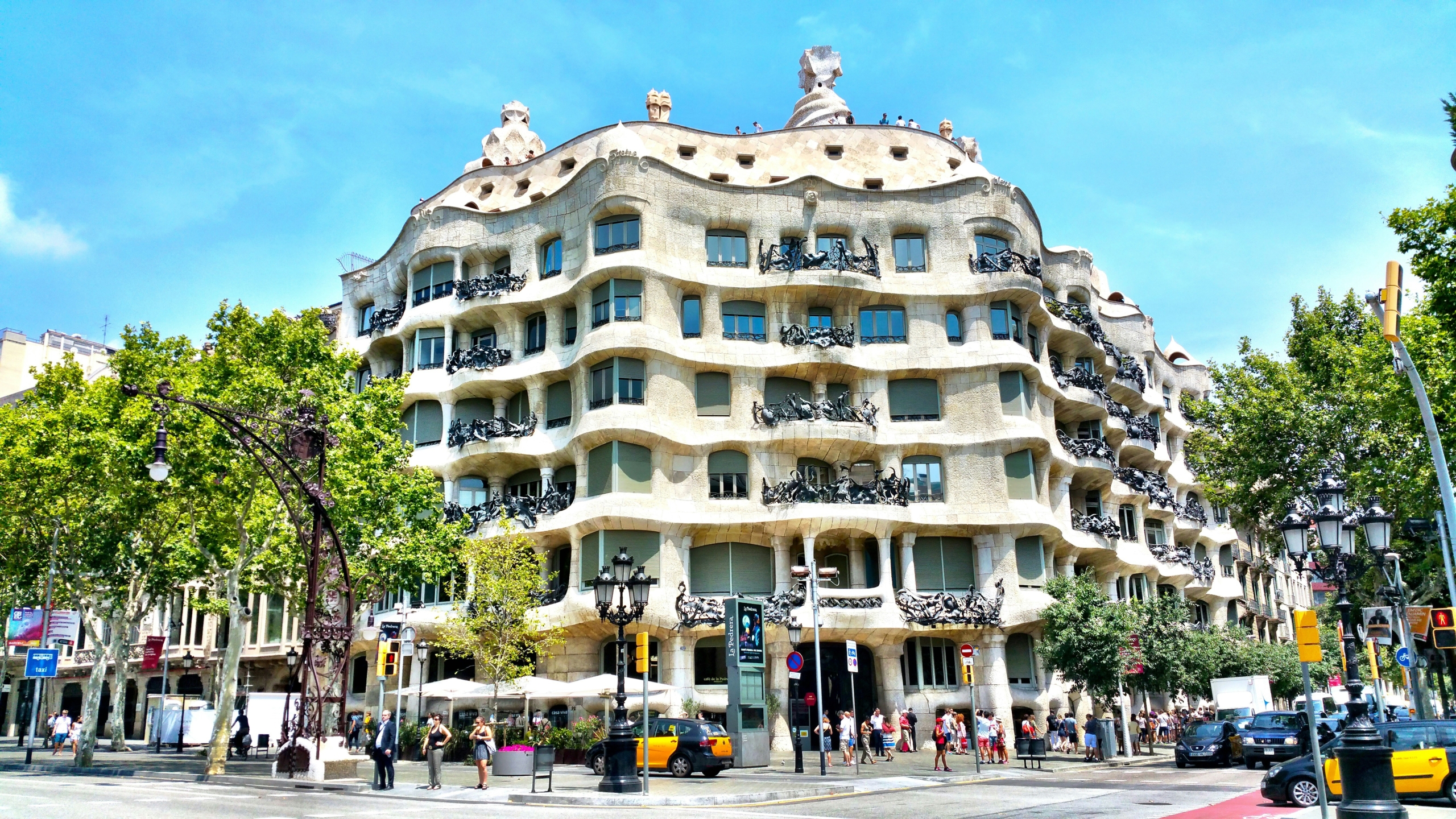
Barcelona, Spain’s dramatic and unusual architecture does a fantastic job creating the “out of this world” sense of place that travelers often seek, all thanks to “God’s Architect” and Barcelona’s own native son, Antoni Gaudí. Considered paradigms of Catalan Modernism, Antoni Gaudí’s works have become symbols of Barcelona, Spain, where he spent the majority of his life – and where his work attracts millions of visitors a year.

Portrait of Antoni Gaudí. Image source
Born in 1852 in Catalonia – the region in northeast Spain containing Barcelona – Antoni Gaudí spent most of his time outdoors, savoring Catalonia’s beauty. Even as an adult, he could often be found riding horseback through the countryside or walking some six miles a day while studying the natural world.
His love for his Catalan heritage, his deeply held wonder towards nature, and his strong religious faith became the foundation for his signature architectural style. Gaudí believed that “man does not create...he discovers. Those who look for the laws of Nature as a support for their new works collaborate with the Creator…Originality means returning, through one's resources, to the simplicity of the early solutions.” For Gaudí, architecture was a way to appreciate God’s creations.
After graduating from the Llotja School and the Barcelona Higher School of Architecture, Gaudí rapidly gained recognition for his radical embrace of Catalan Modernism, an artistic style inspired by Catalan culture and characterized by curved lines, rich decoration, fine details, stark asymmetry, dynamic shapes, and the use of organic motifs.

Casa Vicens, Gaudí’s first major architectural feat.

Close-up view of some of the nature-themed details built into Casa Vicens.
Between 1878–1885, Gaudí worked on his first major commission: Casa Vicens, located in Barcelona, Spain. It is considered the first great work of Catalan Modernism and gives an interesting point of reference when considering the evolution of Gaudí’s style. Notably, this structure lacks the curved lines and asymmetry that defined Gaudí’s later work; he instead opted to use geometric shapes to contrast intricate plant-themed decorations. The interior also features nature-inspired elements, such as sky-blue vaulted ceilings and frescoes inspired by the nearby River Cassoles.

Controversial Casa Milà in Barcelona, Spain.
It didn’t take long for Gaudí to venture into more experimental uses of lines and shapes. One of his more controversial works, Casa Milà, began construction in 1906. Known locally as La Pedrera (The Stone Quarry), the building features a seamless, undulating surface that appears to be carved straight from a rock face. Its lack of respect for conventional design rules seemed to make Casa Milà especially vulnerable to criticism as it became a prime subject of ridicule among citizens and publications alike; many found the imposing stone building roughhewn and unsightly.

Casa Batlló in Barcelona, featuring an oceanic, skeletal exterior.
Around the same time, the well-known Batlló family commissioned Gaudí to remodel their residence into something audacious and unique. Gaudí was happy to deliver. He experimented even further with organic shapes and nature-inspired details with the design of Casa Batlló; it features bone-like balconies, a scaly mock-iridescent roof, and a wavy façade decorated with tiny shards of glass and ceramic in a mosaic-like pattern. Together, the mosaics resemble the surface of a pond – some liken it to Claude Monet’s water lily paintings.

Parc Güell, the park-and-garden system in Carmel Hill, Barcelona.
From 1900–1914, Gaudí developed Park Güell, one of Barcelona’s iconic attractions and another of his most famous works. The park provided Gaudí with the freedom to truly unleash his architectural genius and perfect his nature-inspired style, while also incorporating cultural, political, and religious symbolism. The result: a community-focused residential and recreational area that is significant in both meaning and beauty.

La Sagrada Familia, Gaudí’s yet-unfinished magnum opus, in Barcelona, Spain.
Finally, in 1915, Gaudí solely devoted himself to the synthesis of his architectural evolution: La Sagrada Familia, now a globally recognized symbol of Barcelona. Perhaps the best-known example of his work and his personal magnum opus, La Sagrada Familia blends all the bold stylistic elements Gaudí had developed throughout his career. With tree-like columns, honeycomb gates, vine-inspired friezes, animal-shaped gargoyles, and grass- and crystal-shaped pinnacles, the cathedral’s fairy-tale-esque appearance feels starkly – and wonderfully – out of place in its urban setting.

The interior of Sagrada Familia was designed to resemble a forest. Even the lighting is reminiscent of sunlight peeking through a canopy of tree branches. Image source
Sadly, Gaudí never saw the cathedral to fruition; he tragically passed away on June 10, 1926, after being struck by a tram. After over a century of construction, La Sagrada Familia is still a work in progress, with an anticipated completion date in 2026.
Antoni Gaudí’s influence in the architectural world and within Barcelona cannot be understated; his works are some of the most-visited attractions in the city and, in fact, in all of Spain. Gaudí strove to “collaborate with the Creator,” and the results produced unique designs that continue to enchant and fascinate the world.
To learn more about Antoni Gaudí and to encounter some of his wonderful works firsthand – including Parc Güell, La Sagrada Familia, and Casa Milà – join us on our Across Spain and Portugal tour, where we spend three nights in Barcelona enjoying its many offerings. Or, add the “Barcelona – On Your Own” optional post-tour extension to our Paradores & Pousadas tour for four days of leisure in this lively city.
By using this website you are agreeing to our Cookie Policy.